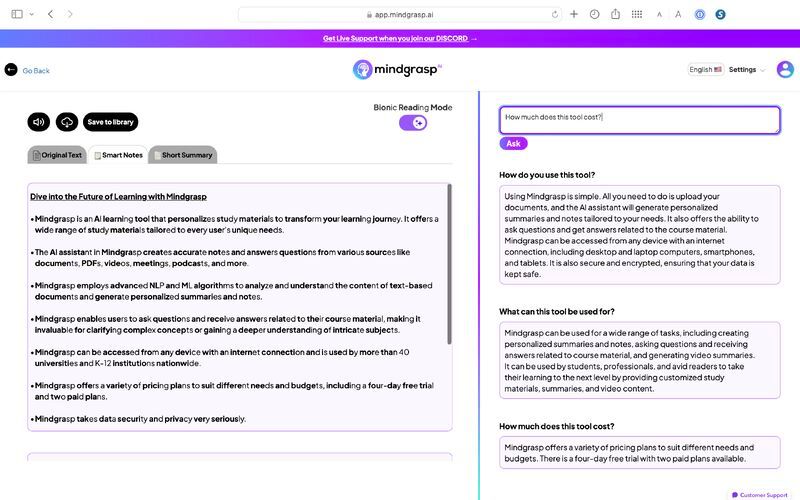
1. Tell us about your company and the problem it solves, or its benefit to learners or educators.
Mindgrasp is an AI learning assistant for students, teachers and professionals. The platform reads, listens and watches live and recorded lectures as well as other resources such as documents, textbooks and models to create notes, summaries, flashcards and quizzes in more than 15 languages. Mindgrasp enables users to save time, learn 10 times faster and improve memorization and comprehension skills. The educational technology software is trusted by students and educators from esteemed institutions including Stanford University, Princeton University, Massachusetts Institute of Technology (MIT) and more. Educators use the platform to save time on administrative tasks and study tools, like quizzes, which allows them to focus on critical thinking and building relationships with students. Mindgrasp is the only platform that integrates with Blackboard and Canvas via a Chrome extension, ensuring seamless use for university students and staff.

2. Where did the idea come from to create your company?
Our team values education over everything and wanted to find a more efficient way to prepare for exams while in college. We needed a better, faster and more efficient way to grasp the material, other than rereading a book from start to finish and with more details than what SparkNotes or CliffsNotes offered. I was working as a product development consultant at eMan where I had exposure to large language models while Thai and Shayan were exploring how to apply generative models to education. We recognized we could leverage AI with tried-and-true study tactics such as quizzes and flashcards to provide a tailored learning experience for students. This led us to being accepted into the Mokhtarzada Hatchery program at the University of Maryland where we were challenged with the task of creating a potential business idea that could be programmed into a usable tool. Through our personal experience and natural passion for learning we knew this technology could be a solution for the inefficiencies we were experiencing within the education system at the university level.

3. Tell us about one challenge and how you overcame that challenge.
There are many challenges when creating a new solution, especially with newer technology like AI. Our greatest challenge is wanting to continually improve and add to our tech stack so that we’re providing outsized value to our growing user base. We’re meeting this challenge through aggressive and ongoing product evaluation and iteration.
4. What are you most proud of or what is your company’s greatest achievement?

The Mindgrasp team was chosen to be part of the Mokhtarzada Hatchery’s empowering enTERPreneurs program at the University of Maryland, where we gained valuable experience and knowledge in taking an idea from just that, an idea, to a commercial entity. Mindgrasp was the only entity in the program to make it to the commercial launch stage, a validating proof point to the demand we are filling within the edtech market.
5. Where do you see your company in five years?
We’re focused on hitting our next milestone of $10M ARR. This will come quickly as we have some truly exciting plans in place for integrating into student’s classroom workflow that will be the next expression of our vision to revolutionize the student learning experience. We hope Mindgrasp can help education become more accessible to those from underprivileged backgrounds and help bridge the education gap.


